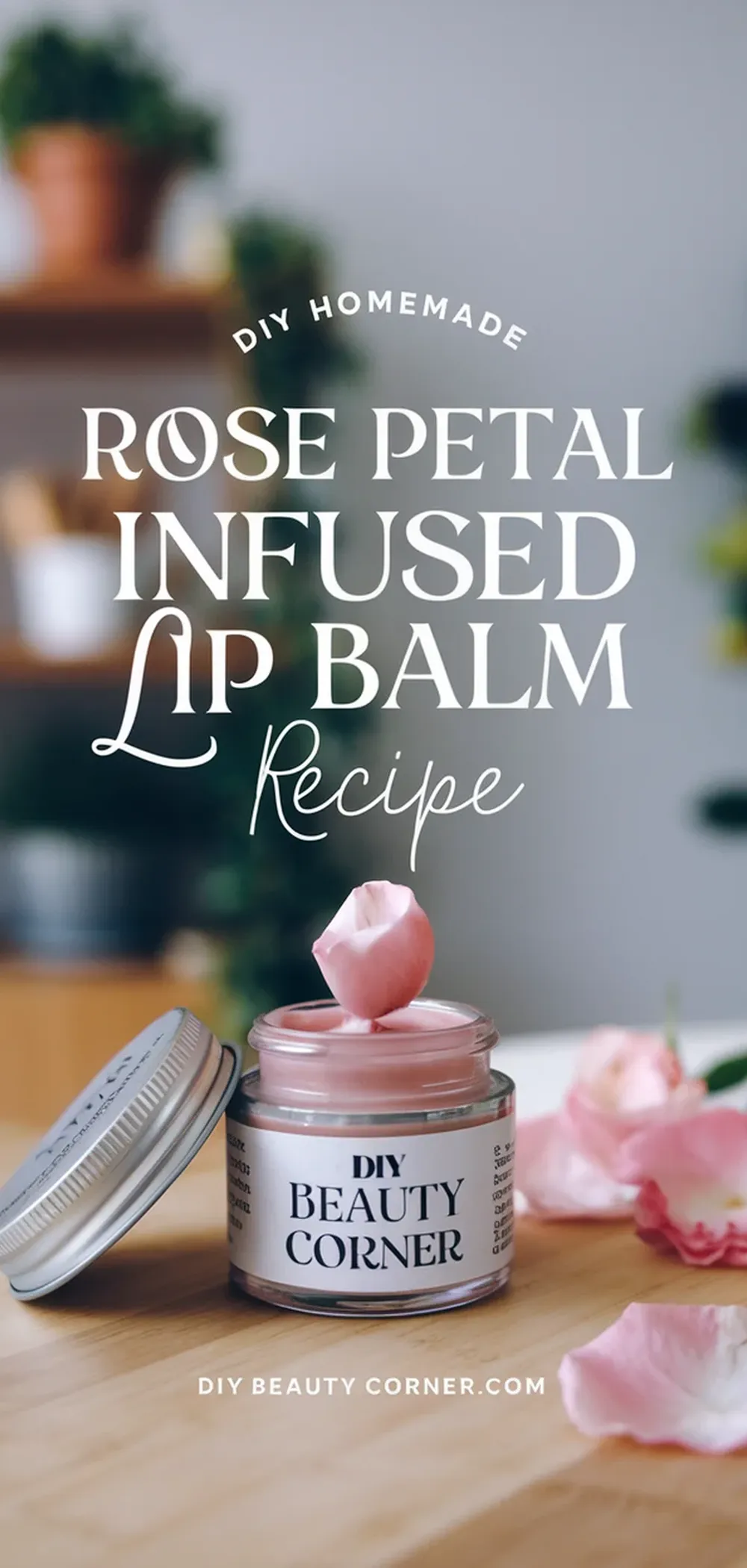
Making your own lip balm at home is a rewarding and enjoyable experience. With just a few simple ingredients and steps, you can create a luxurious rose petal infused lip balm that nourishes your lips while providing a delicate floral scent. This DIY project not only allows you to customize your balm according to your preferences but also gives you control over the components you use, ensuring a product free from unwanted chemicals.
In this post, I’ll guide you through the process of infusing oils with rose petals, combining them with natural wax and other beneficial ingredients. By preparing your own lip balm, you’ll discover a fulfilling way to use rose petals creatively, especially if you have them readily available from your garden or local market. Let’s dive into the ingredients and recipe that will bring a touch of nature to your daily skincare routine.
Gathering the Essential Ingredients
To create a rose petal infused lip balm, I need to gather specific ingredients that not only provide nourishment but also enhance the fragrance and texture. Each component plays a crucial role in the final product. Here’s what I focus on when gathering my supplies.
Choosing Quality Rose Petals
When selecting rose petals, I prioritize quality. I opt for culinary rose petals that are free from pesticides and chemicals. These petals not only provide natural fragrance but also have beneficial properties for the skin.
I often use fresh rose petals when available, as they tend to have a richer scent and more potent properties. If fresh petals aren’t accessible, dried petals are a viable alternative. They should be aromatic and retain their color for the best results. I ensure that any rose petals I choose have been sourced responsibly, as this enhances the quality of my lip balm.
Selecting Carrier Oils
Carrier oils serve as the base for my lip balm, helping to nourish and moisturize the lips. I favor coconut oil for its hydrating properties and pleasant scent. The oil helps to blend the rose petals and transfer their essence into the balm.
Another option I consider is almond oil, which is light and rich in nutrients. Each oil I select should be of good quality and preferably cold-pressed. This method retains the beneficial properties of the oil. By choosing the right carrier oil, I ensure that my lip balm not only smells wonderful but also provides excellent moisture retention.
Beeswax and Shea Butter
For structure and consistency, I include beeswax in my recipe. It gives the lip balm a solid form while retaining moisture. I typically use about half an ounce of beeswax.
Shea butter is another important component, offering additional nourishment to the lips. It helps create a creamy texture that glides smoothly during application. Both ingredients work synergistically to create a protective barrier on the lips, locking in moisture while preventing dryness.
I prefer to use high-quality, filtered beeswax and raw shea butter to maximize the benefits in my lip balm creation. These ingredients ensure that my finished product is effective and pleasing to use.
Essential Oils and Vitamin E
To enhance the fragrance and therapeutic properties of my lip balm, I often add essential oils. I typically include about 15 drops to provide a subtle scent without overpowering the rose essence. Popular choices are lavender or peppermint.
Additionally, I use Vitamin E as an antioxidant, which can benefit the skin’s health. It helps to prolong the shelf life of my lip balm as well. I can include one or two capsules to ensure my balm stays fresh while providing skin-soothing properties.
By choosing the right essential oils and Vitamin E, I can further customize my lip balm’s scent and effectiveness while ensuring it remains nourishing for my lips.
Crafting Your Rose Petal Infused Lip Balm
Creating a rose petal infused lip balm involves a few simple steps: infusing rose petals into oil, melting and mixing the ingredients, filling the containers, and finally packaging the balm for use or gifting.
Infusing Rose Petals
To begin, I gather 1/4 cup of culinary rose petals. Fresh petals work best, but dried ones are also suitable if fresh is not available. I place the petals in a mason jar or a heat-safe glass measuring cup. Following this, I measure 1/4 cup of coconut oil and pour it over the rose petals. This combination allows the rose’s essence to blend beautifully into the oil.
Next, I let the mixture infuse for a few hours. To encourage better infusion, I may choose to gently heat it using a double boiler. This ensures that the heat is low and prevents the oil from burning. Once infused, the oil will absorb the fragrant properties of the roses.
Melting and Mixing
After the infusion, it’s time to combine the rose-infused oil with other key ingredients. I measure out 1.5 ounces of rose-infused oil or rose oil to enhance the scent and moisturizing properties. I also prepare 0.5 ounces of beeswax, which acts as a natural thickening agent.
In a double boiler, I add the infused oil and beeswax together. As they gently heat, I stir the mixture to blend them uniformly. If I want to create additional fragrance, I can add 15 drops of essential oils at this stage. This step gives the balm a personal touch by allowing me to choose my favorite scents.
Filling and Setting
Once the mixture is fully melted and homogeneous, I carefully remove it from the heat. Using a funnel or pipette, I fill small containers or lip balm tubes with the hot mixture. I typically leave about 1/4 inch of space at the top to allow for expansion as it cools.
I then let the filled containers sit at room temperature. In approximately 30 minutes to an hour, the lip balm will solidify completely. By keeping it in a cool place, I ensure that it sets properly without creating an uneven texture.
Packaging and Labeling
When the balm is fully set, I can get creative with packaging. I prefer using small jars or twist-up tubes, which make application easy. For a polished appearance, I add labels that display the product name and any additional details, such as the scent.
Customizing the labels makes it a lovely gift for friends or family. I may also add decorative elements like ribbons or stickers. This adds a personal touch, enhancing the overall presentation of my homemade lip balm.


